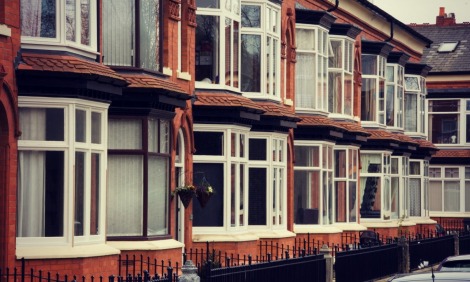Cross-posted from Heritage Calling: An English Heritage Blog
George Clarke, architect and Creative Director of architectural practice George Clarke + Partners; writer, lecturer and TV presenter.
Britain faces a number of critical housing issues. There is a series of difficult and complicated problems that needs to be addressed so that we can have a clear and long-term housing plan that is not only sensible, but also achievable. Short-term reactions don’t work, but with cross-party approval a long-term strategy can be consistently implemented by whichever government is in power. If we don’t have that long-term plan then the crisis will never be solved. I sometimes wonder whether the scale of the crisis is so large and the decisions that have to be made are so difficult that elected politicians aren’t quite sure how to deal with it and are even afraid to do the right thing. But doing nothing is not an option.The government and the country as a whole need to act – and they need to act now.
Good buildings not only improve the lives of those that use them and live in them, but also make significant, positive contributions to the built environment. They enhance the villages, towns and cities in which we live. Good architecture has a powerful effect on all of us and can add value in so many ways. When I talk about adding value, I’m not talking about the monetary value added to the economy (although this is definitely a positive effect of good buildings too!) but adding value to the quality of our everyday lives. I once asked a brilliant architect ‘what makes a good building?’ His reply? ‘One that makes you smile.’ I love that. It is so simple, but it’s true. If you can feel safe, content, comfortable and moved by a building and it makes you happy, then it’s a good one.
Older homes that have stood the test of time have done so because they are successful buildings that have a value to those that experience and feel passionate about them. I am not an architectural historian nor a building conservationist, but I come into intimate contact with these kind of buildings through my architectural practice and when following the lives of our incredible restoration warriors when I’m filming The Restoration Man. I see the power and value that our heritage has on our everyday lives and how important history is in defining who we are. Every stone, every brick and every piece of timber has a story to tell. I love the process of finding out why a building was built, who built it, why it may have fallen out of use and why it should be saved and given a new lease of life. We now live in an age where recycling and up-cycling are words on the tip of everyone’s tongue. Surely recycling an existing home is one of the most sustainable things we can do. There is so much embodied energy in our existing buildings and with the incredible developments in material and product technology there is no reason why our old homes can’t be reinvented and dragged into the 21st century in an intelligent and sustainable way.
The mass demolition of so many Victorian terraced homes over the last 10 years has been a national scandal, which is why I launched my Homes from Empty Homes campaign in 2011.These buildings needed investment and maintenance over their lifetime and when this didn’t happen many were allowed to irreparably decay. Many of these dwellings could – and should – have been saved at a time when there was such a need for more homes. Instead, they were swept away, ignoring the environmental, social and even economic advantages that renovation offers. New doesn’t always mean better.
We have managed to show that there are ways of saving our old buildings and giving them new purposes to suit the way we live today. We have also provided skills and training to so many young people who are desperate to learn a trade in the building game. It is a sign of our heritage-hungry times that the recent Stirling Prize winner, Astley Castle in Warwickshire, shook the foundations of the architectural establishment by not only being the first home to win the award, but also the first restoration project. Controversial indeed, but it did make me smile.
Preserving our heritage and reinventing our old homes in an exciting and innovative way, while at the same time building beautiful new buildings, is the future of Britain. We should all embrace the opportunities our heritage offers.
* This article is taken from Conservation Bulletin, a free publication to download from English Heritage. This latest edition takes a closer look at housing with a range of articles looking at the drivers behind current levels of supply and demand, successful development projects to create new housing in historic places and efforts to better understand and manage change to traditional housing.



